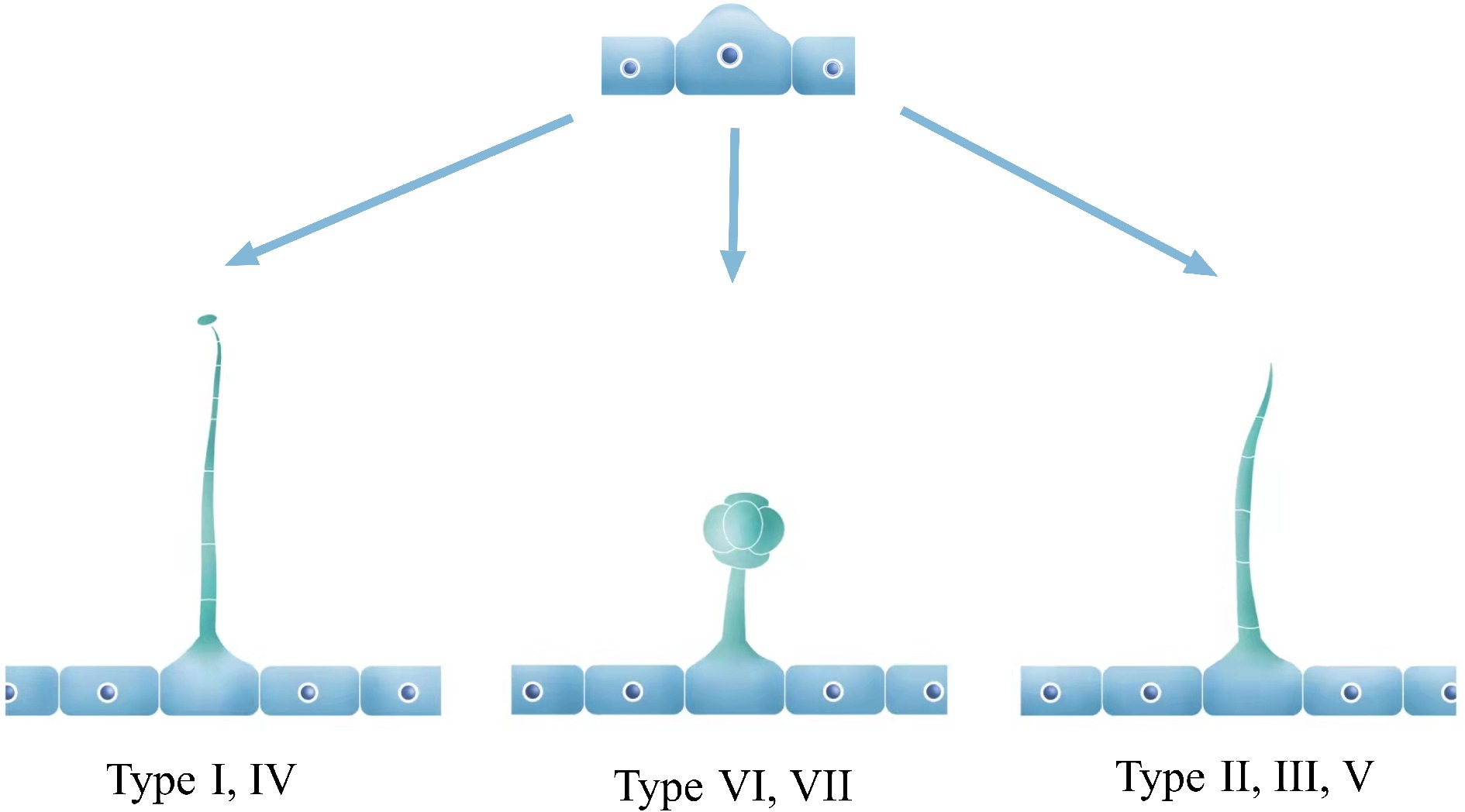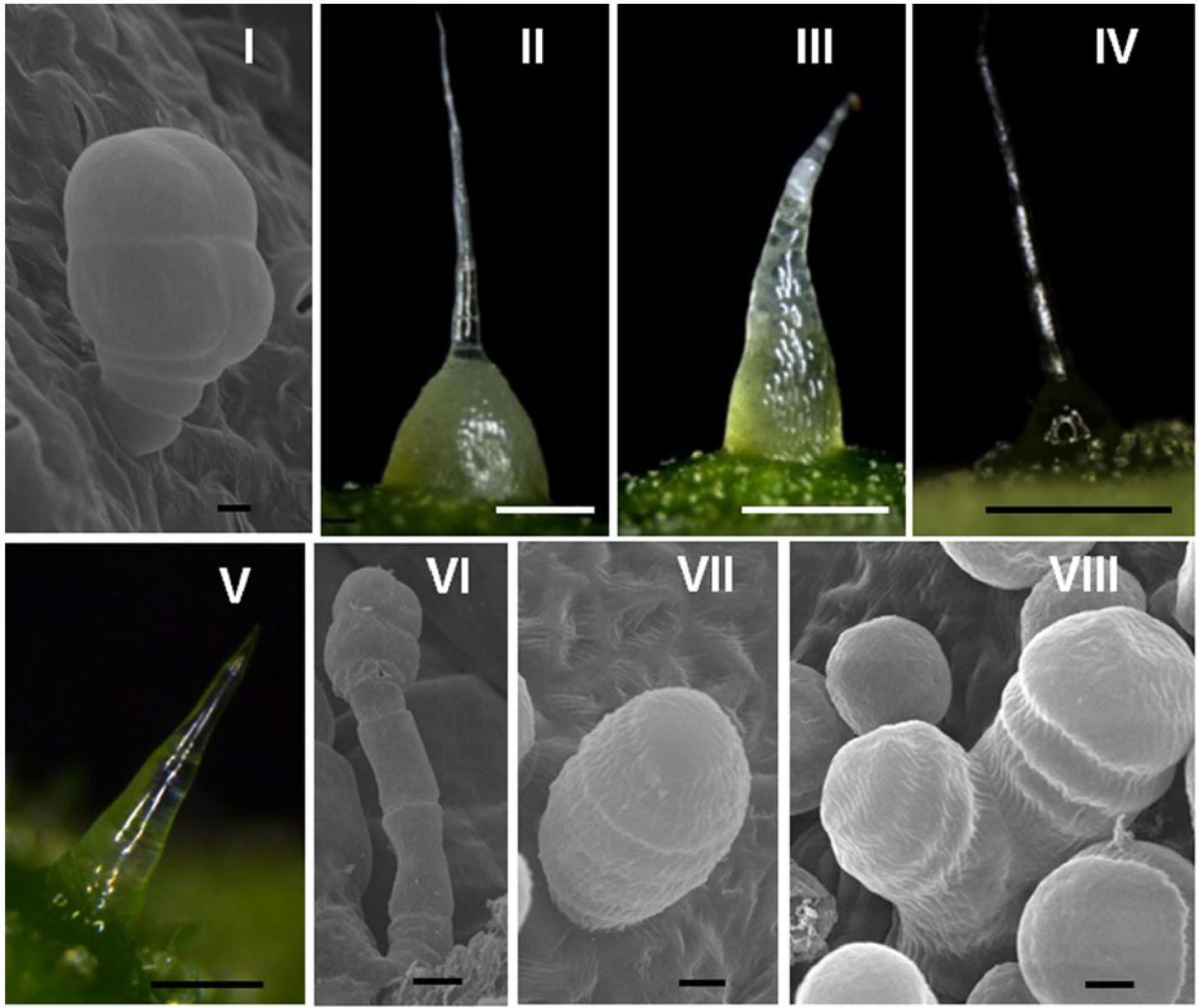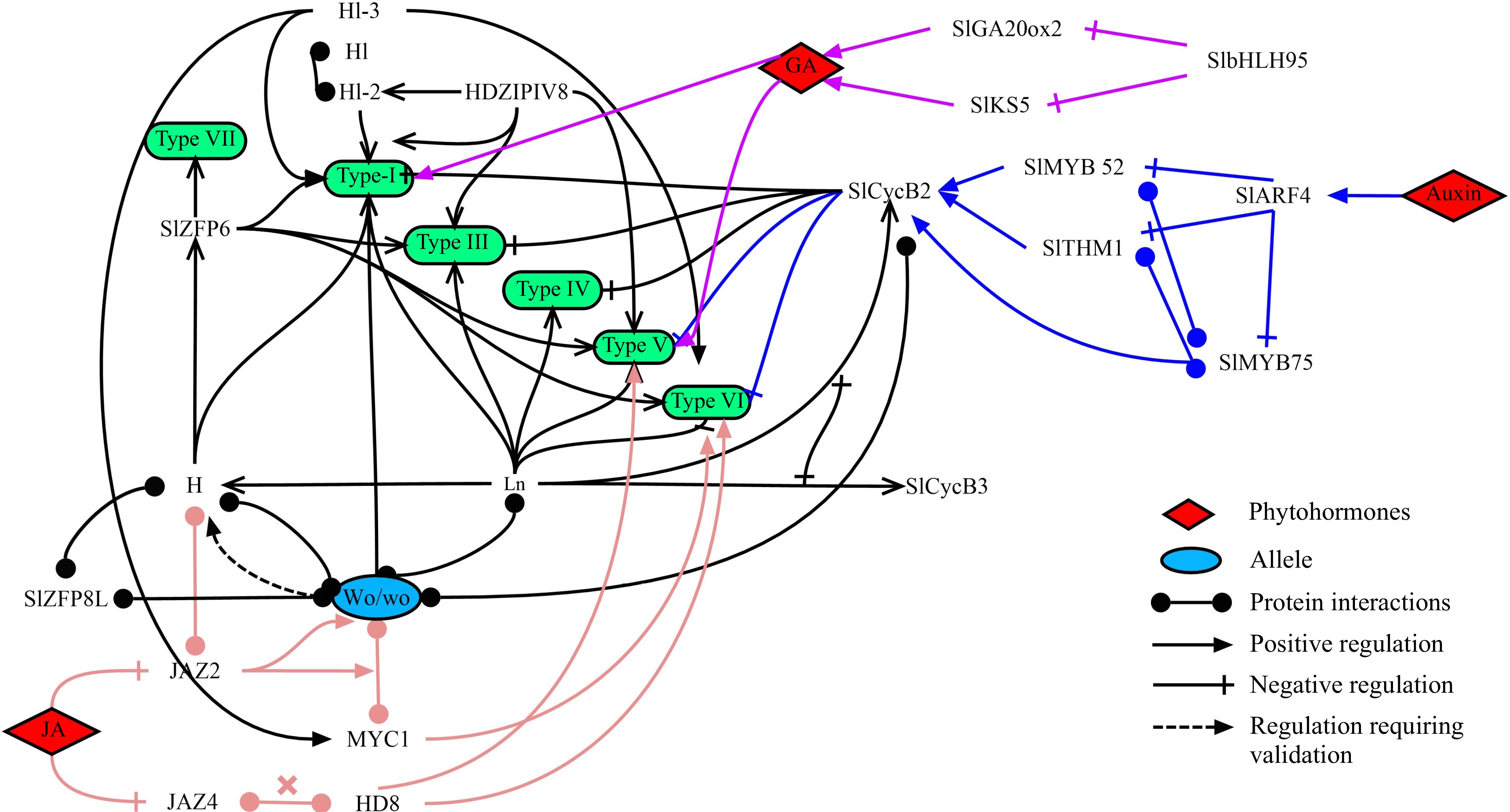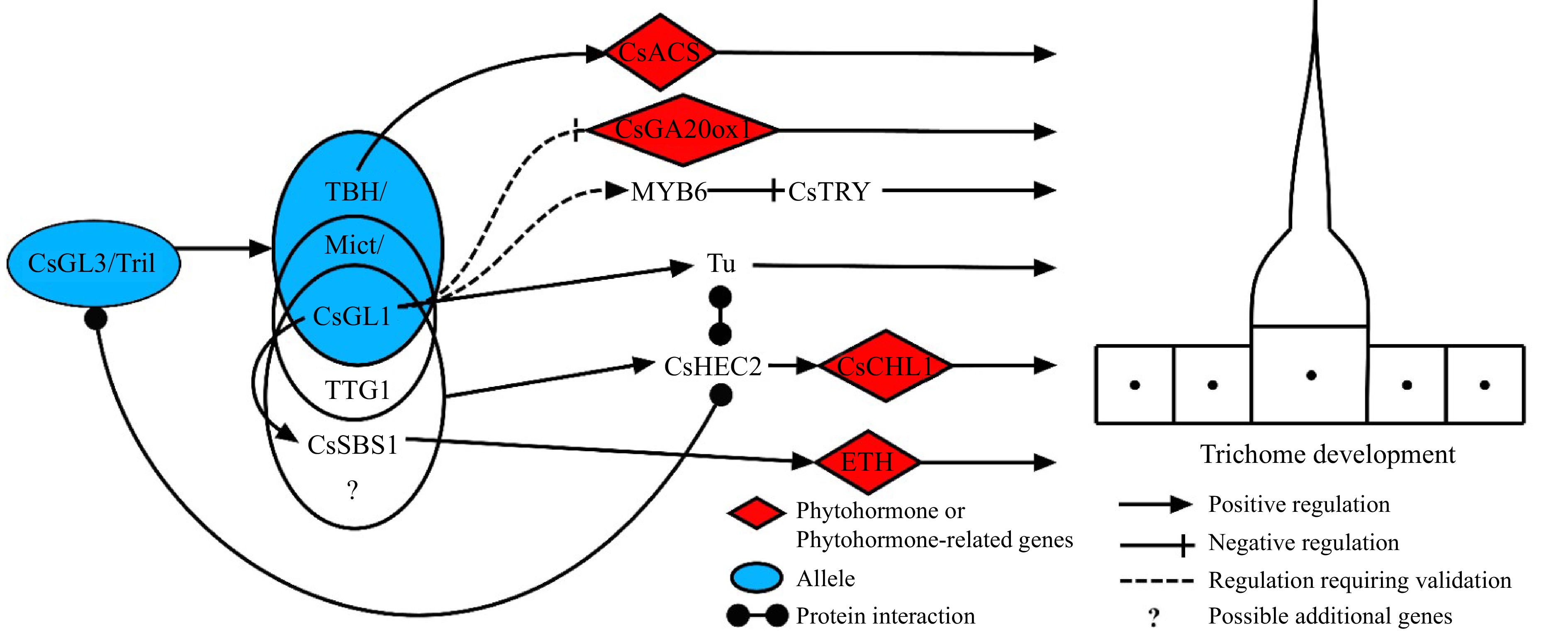-

Figure 1.
Model diagram of tomato epidermal trichomes. In tomato, epidermal trichomes that protrude outward from the epidermal cells usually develop into three common types: long glandular trichomes (Type I, IV), short glandular trichomes (Type VI, VII), and long non-glandular trichomes (Type II, III, V).
-

Figure 2.
Epidermal trichomes of eight types of cucumber. Bar = 500 μm (II–IV); 100 μm (V); 20 μm (VI); or 5 μm (I, VII, and VIII). This image is quoted from Xue et al.[29]
-

Figure 3.
A model for regulating different types of trichome development in tomato. Different types of tomato trichomes are presented in the green box. The colored lines correspond to different phytohormones-related regulatory pathways. The transcription factors Wo, H, Ln and CycB2 play an essential role in trichome development.
-

Figure 4.
A proposed cucumber trichome regulatory scheme. Tril/CsGL3, TBH/CsGL1/MICT are key transcription factors regulating trichomes in cucumber. In particular, the transcription factors in the blue circles represent different alleles of a gene, in which Mict can interact with TTG1 to regulate the initiation of trichomes[32]. CsSBS1 can form a trimeric complex with CsTTG1 and CsGL1, thereby regulating trichome formation, and the gene CsGL1 has an epistatic effect on CsSBS1[65]. In addition, these transcription factors affect trichome development by regulating the expression of downstream genes or modulating phytohormone signaling pathways.
-
Types TFs Species Function Effect Metabolite production Hormone involved Reference bHLH SlMYC1 Tomato Type VI formation P Terpenoids [39] CsbHLH1 Cucumber Glandular trichome formation P [21] HECATE2 Cucumber Trichome density P CTK [64] bHLH95 Tomato Trichome initiation N GA [48] MYB SlMX1 Tomato Glandular trichome density P; N Terpenoids, carotenoids, and phenylpropanoids [40,69] SlMixta-like Tomato Trichome Initiation N [41] CsTRY Cucumber Trichome density N [32,61] CsMYB6 Cucumber Trichome initiation N [60,61] MYB52 Tomato Types V formation N AUX [49] SlTHM1 Tomato Types II, V and VI formation N AUX/JA [46,49] MYB75 Tomato Types II, V and VI formation N Sesquiterpene AUX [49,50] HD-ZIP Wolly Tomato Type I density P Terpenoids JA, AUX and GA [36,70] SlHZ45 Tomato Trichome density (especially Type I,IV,VI) P [71] HDZIV8 Tomato trichome morphology P [72] Ln Tomato Trichome density [19] CsGL3/Tril Cucumber Trichome initiation P [53,54,73] Tbh/Mict/CsGL1 Cucumber Trichome morphogenesis P; N Flavonoids [56,57,62,74,75] CsGL2 Cucumber Trichome density P [71,76] SlCD2 Tomato Trichome formation (especially Type VI) P [70] SlHD8 Tomato Trichomes elongation P [47] CsSBS1 Cucumber Trichome development P ETH [65] Mict-L130F Cucumber Trichome morphogenesis N [77] Hairiness Pepper Type II, III, V formation P [33] ZFPs CsTu Cucumber Trichome formation P [63,73] Hair/Hair-like (HL)/ SPARSE Hair (SH) Tomato Type I formation P JA [38,46,78] SlZFP8 Like Tomato Trichomes initiation and elongation P [20] ZFP6 Tomato Trichomes density and length P [20] WD-repeat protein CsTTG1 Cucumber Trichome density P [32] Cyclin SlCycB2 Tomato Trichome density P [36,37] SlCycB3 Tomato Trichome formation P [19,36,37] WAVE regulatory complex Hairless (Hl) Tomato Trichome morphology N Sesquiterpenes, flavonoids [79] Hairless-2 (Hl-2) Tomato Trichome morphology N [72] ARPC1/Hairless-3 (Hl-3) Tomato Trichome morphology; Trichome density (especially Type I, IV) N Terpenoids [80] CHI CHI1 Tomato Trichomes density N Flavonoids [5] AUX/IAA SlIAA15 Tomato Type I, VI density P auxin [51] ARF SlARF3 Tomato Type I, VI density P auxin [51] SlARF4 Tomato Type II, V, VI formation P [49] JA related JAI-1 Tomato Type I, VI formation N JA [52] JAZ2 Tomato Trichome density N JA [44,46] JAZ4 Tomato Trichome development N JA [47] P1 Soybean glabrous [81] Ps Soybean sparse pubescence N [81] Pd1 Soybean dense pubescence P GA, CTK [81] Note: P: Positive; N: Negative. Table 1.
Genes involved in the development of trichomes in tomato, cucumber, pepper and soybean. Table adapted from Feng et al. [35]
Figures
(4)
Tables
(1)